An architectural marvel given by M. Ghazi, to town Bhong Sharif 27 km from Sadiqabad city of RYK district in Punjab Pakistan, is known as Bhong Masjid. It is a masterpiece and an exemplary to beautiful construction in any means.
Construction of Bhong Masjid Pakistan
Bhong mosque known as masjid Bhong Sharif located in Pakistan is very rich in its history, architecture, and beauty, constructed by Sardar Raees Ghazi Muhammad.
Pakistan is very rich in its ancient, architectural, beautiful, sacred, and historic sites to visit like Rawat Fort, Shahi Qila Lahore, Mohenjo-Daro & Harappa, Darbar Sahib Kartarpur, Altit and Baltit Forts, and many more.
The late Sardar Raees Ghazi, a well-known personality of Qasba Bhong, Tehsil Sadiqabad, Rahim Yar Khan District, Punjab, Pakistan laid the foundation stone of Bhong Masjid in 1932 in the premises of his palace.
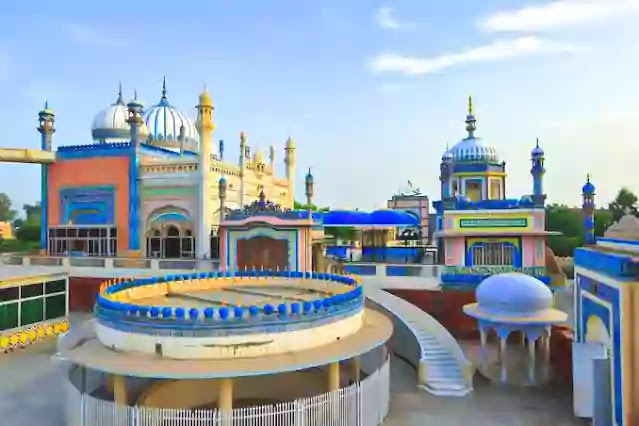
The mosque was built with intricate decorative designs and gold in calligraphy to enhance its architectural beauty.
Sardar Raees Ghazi drew some points from the monuments of Lahore, Iran, Spain, and Turkey and at the same time created a beautiful masterpiece by mixing Western architecture. The mosque combines teak, marble, limestone, tile, ceramic, glasswork, colored cement, and other art.
Special attention has been paid to Islamic art in all parts of the mosque. The mosque was completed in a long period of about 53 years. For this, artisans and craftsmen were brought from Rajasthan, India for architect tile and woodwork, painters, and calligraphers from Multan, Karachi.
Regular workshops were organized, skills were regularly transferred from father to son and grandson. During the preparation, one thousand workers were given skill training.
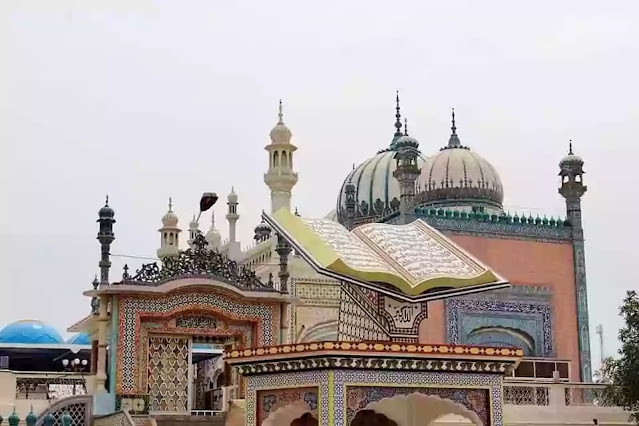
The main entrance is a replica of the main entrance to Imam Raza's shrine in Mashhad. If you enter inside the door, there is a large garden with fountains in the style of Shalamar Garden in Lahore.
Awarded for its Beauty
Sardar Raees Ghazi was awarded the Aga Khan Award for Architecture in Morocco in 1986 in recognition of building such a large-scale mosque "at the regional level".
On March 23, 2004, the President of Pakistan conferred Sitara-e-Imtiaz on Sardar Raees Ghazi for his services. Pakistan Post issued a 'stamp' on May 12, 2004.
From Sadiqabad you can easily visit Bhong Masjid 27 km away by wagon or bus to see this beautiful mosque.
According to the decision of international experts, the Jama Masjid of Bhong town of Sadiqabad tehsil is ranked fourth in the world in terms of architecture, location, area, and map. Sixty members of the Aga Khan jury in a unanimous meeting recognized the honor of the mosque in this remote town.
Four internationally recognized photographers of the Aga Khan Trust traveled from European countries to the town of Bhong, stayed for a month, and performed color photography to the best of their ability, which was presented to the experts of the Aga Khan Jury.
The jury declared the photography of the mosque worthy of the Aga Khan Award. The award was distributed by the King of Morocco in Rabat. Prince Karim Aga Khan was there.
The son of the late Raees Ghazi, the founder of the mosque, and Raees Shabbir Ahmed, a member of the National Assembly, had gone to Morocco to receive the award. He received the award in a colorful ceremony.
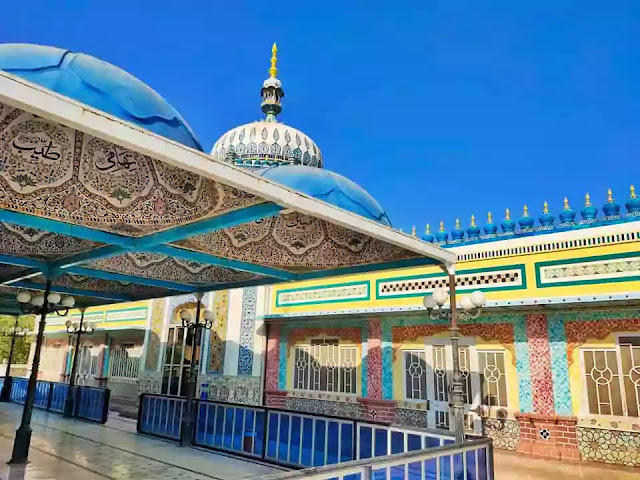
Location of Bhong Masjid Pakistan
The town of Bhong has located 27 km from Sadiqabad city Rahim Yar Khan District on the National Highway. The entire town and its environs are owned by Sardar Ghazi Muhammad, the family head of the former state of Bahawalpur.
Hurdles to Construct Bhong Masjid Pakistan
Sardar Raees Ghazi Muhammad started the construction of the mosque in 1929 and in 1950, when the basic structure was erected, water-logging and salinity took over the entire area. Raees Ghazi's dream was to make it so beautiful that it would be the only stable and lasting in the whole world.
But after investing millions of rupees, the structure was completed in 21 years, he felt weak. Raees Ghazi orders rebuilding of mosque structure without any hesitation.
He first built a large dam around the town of Bhong, paying most of the cost of the dam out of his own pocket. And some help from the government.
Design & Architecture
The mosque was designed by Raees Sahib himself, neither mapped by an international construction firm nor enlisted by an architect. In 1929, the foundation of the mosque was placed four feet above the ground level and it was filled with a mixture of sand and lime, solid bricks, and solid stones.
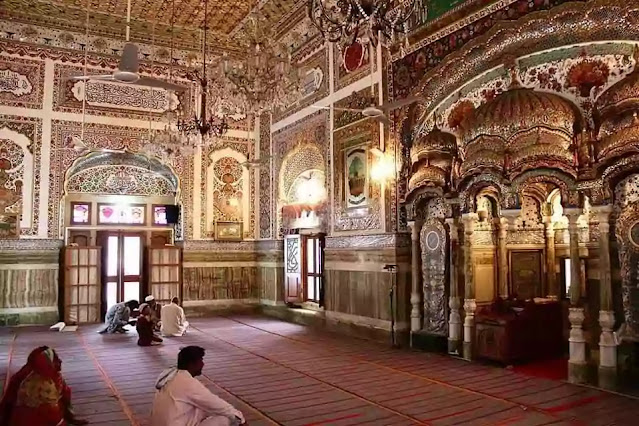
Mason Faiz Bakhsh
Raees Ghazi dedicated the services of Faiz Bakhsh, the family mason of Multan, to the construction of the mosque. The family of Master Faiz Bakhsh has been considered an expert in building construction since the Mughal period.
His grandparents did not study at any construction school or engineering university. The father's skills continued to be passed on to the sons.
Mr. Raees Dedicated Faiz Bakhsh to overseeing the construction of the mosque including all the knowledge of architecture found in the Faiz Bakhsh heritage.
Labour & Material
Roads were unpaved, so boats and rafts were used in the Indus to bring in marble and other heavy stones. Sardar Raees Ghazi, the founder of the mosque, invited skilled laborers from Multan, Dera Ghazi Khan, Karachi, and Sindh besides Faiz Bakhsh.
Check & Balance
He did not check the attendance of mechanics and laborers, nor did he reduce their daily wages. Wages were paid regularly every Thursday. And whatever bill was presented, Raees Ghazi would pay without checking it, saying that it is a matter of God's house, the owner of the house will check it himself.
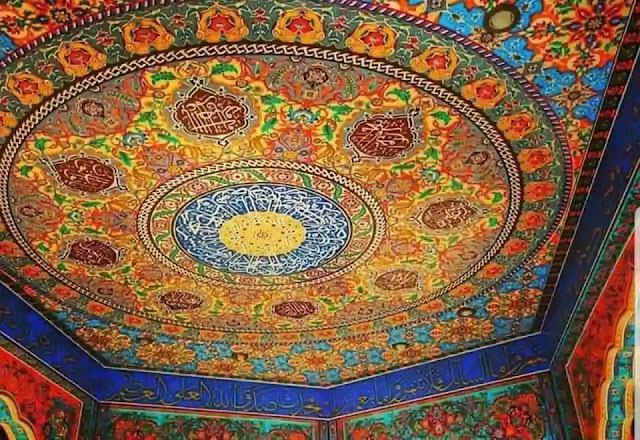
He and his managers never argued with the shopkeepers about the price of whatever material they bought from remote areas, but the shopkeepers were told that there was material to build the house of God so they should honestly price it. Whatever the shopkeeper paid was prompt.
Courage & Spirit of Villagers
Dozens of farmers would come from far and near and start working on the construction of the mosque. And when the time came for them to be rewarded for their labor, these farmers would reply that they would take their wages from the owner of his house on the Day of Resurrection.
These people used to take only food from the anchor of Raees Ghazi. However, there were some believers whose clothes were torn and their appearance showed a picture of hardship and poverty. But they would bake their own bread and start working.
It has been reported that initially, Sardar Raees Ghazi wanted to stop unpaid workers So a laborer replied, 'You yourself are earning a reward, you are a noble and rich man, so you are spending your wealth to prepare for the Hereafter. Why do you deprive the poor of the reward? So Sardar Raees Ghazi did not object to it.
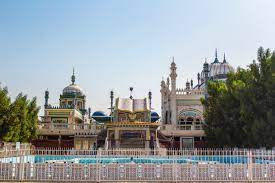
Death of Sardar Raees Ghazi Muhammad
Construction of the mosque resumed in 1950, with the structure completed in 1975. With the completion of the construction structure, Sardar Raees Ghazi Mohammad met his real creator. Survivors of Sardar Raees Ghazi Mohammad include six sons and one daughter.
Sardar Raees Ghazi served the Nation
Sardar Raees Ghazi Muhammad was a feudal lord of vast lands. When President Ayub Khan enacted agrarian reforms, his 500 square acres of land were acquired by the government under agrarian reforms.
Children of Sardar Raees Ghazi
His eldest son, Shabir Ahmed, was a member of the provincial ministry during the Bhutto era.
His younger brother Sardar Raees, Wazir was an active leader of the National People's Party. Sardar Raees Ghazi Muhammad had dedicated two square meters of his land for the completion of the mosque.
He built a beautiful market of 100 shops in Bhong. He devoted his whole life to the mosque and also bequeathed to his sons 'to spend fifty thousand rupees a year on the mosque out of their own pocket'.
The happy children fully respected their father's wishes. After 1975, the completion of the mosque continued at the same pace. This work was completed in 1982, almost 53 years after its inception.
Administration & Expenses of Bhong Masjid Pakistan
No account was taken of the cost of completing the mosque. No accounts were opened. All that was needed was spent in the way of Allah. There is a large seminary attached to the famous mosque of Bhong in which distinguished teachers teach Qur'anic teachings to hundreds of students.

Apart from the food and drink of the students, all other expenses are the responsibility of the founding family of the mosque which is met from the income of the property given to the mosque.
The anchor runs here 24 hours a day and it is announced loudly that if one is hungry, one can come from the anchor and eat without any hesitation.
Completion of Bhong Masjid Pakistan
The Bhong Mosque was completed in three parts. The first is the inner hall where the pulpit and arch are located. The second part is the porch and the third part is the outdoor courtyard.
The mosque covers a total area of ten acres and can accommodate 5,000 worshipers at a time.
The entire structure of the mosque uses sand and lime, the most marble being used. Sardar Raees Ghazi Muhammad was a simple man who spent most of his life in a room of Bhong Mosque from where he could easily join the congregation for prayers.
Features of Bhong Masjid Pakistan
The historic blue tiles of Multan have been used on the arches of the mosque while the roof and the entire front of the mosque have been decorated with marble. The doors are made of teak wood.
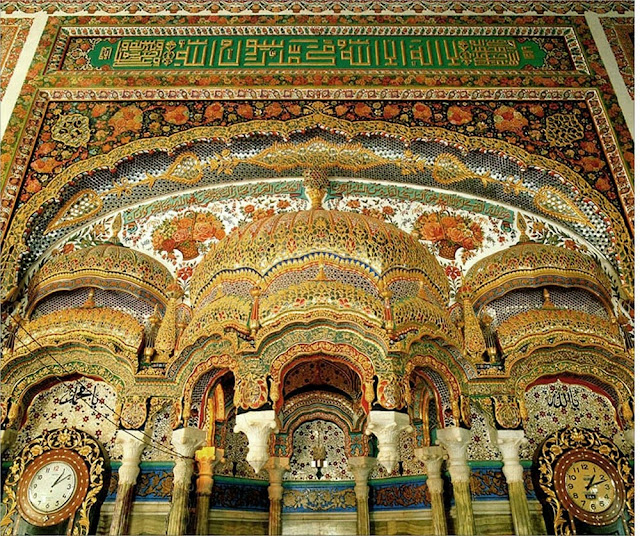
The roof of the mosque is double. The first roof is made of long and heavy iron girders and T-iron, while the roof below it is made of glass and carved wood with extreme workmanship.
The altars and pulpits are decorated with gold-melted carvings, and the beauty of the carvings in the stone is soothing to the eyes. The chandeliers were imported from China and had to be hard to install because they were difficult to install in an iron guard.
The Bhong Masjid is most beautiful and historical, one is amazed to see that there were no drone cameras and no auto-cad facilities, yet the Bhong Mosque Pakistan is a masterpiece of architecture.

